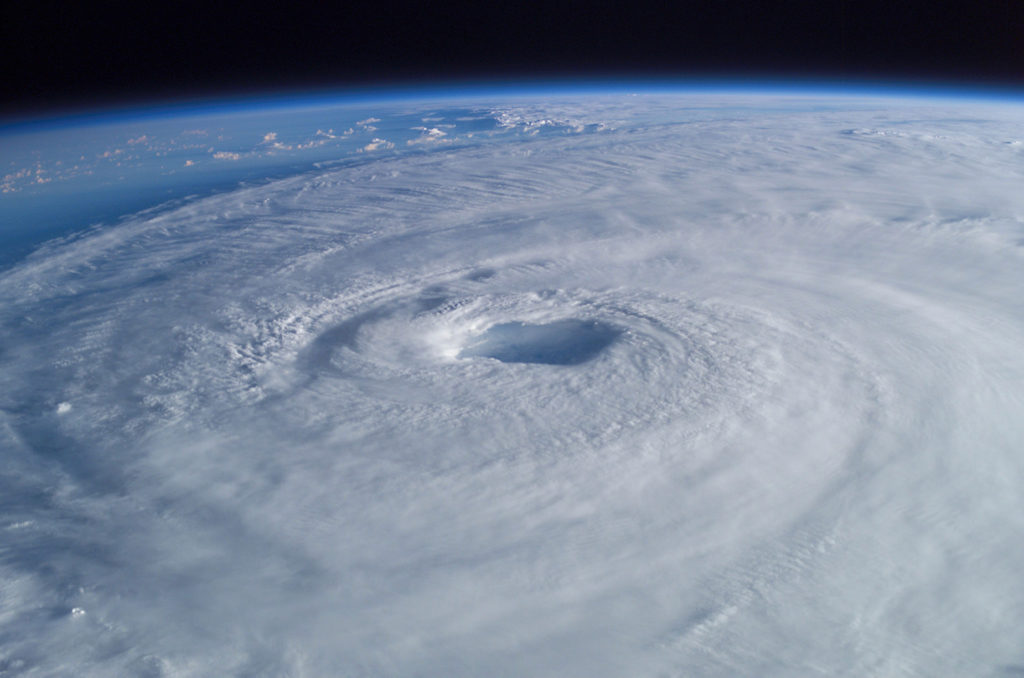
Colorado State University hurricane researchers are predicting an above average Atlantic hurricane season in 2020, according to a report issued Thursday.
The CSU Tropical Meteorology Team cited the likely absence of El Niño as a primary factor in its “Extended Range Forecast” of the upcoming season, which begins June 1. Also, tropical and subtropical Atlantic sea surface temperatures are warmer than their long-term average value, a factor favoring an active 2020 Atlantic hurricane season.
The tropical Pacific currently has warm neutral ENSO – El Niño-Southern Oscillation – conditions; that is, the waters are slightly warmer than normal in the eastern and central tropical Pacific. CSU anticipates that these waters are likely to cool relative to their long-term averages over the next several months. Consequently, they do not anticipate El Niño for the peak of the Atlantic hurricane season. El Niño tends to increase upper-level westerly winds across the Caribbean into the tropical Atlantic, tearing apart hurricanes as they try to form.
The tropical Atlantic is somewhat warmer than normal right now. Warmer than normal sea surface temperatures in the tropical Atlantic provide more fuel for tropical cyclone formation and intensification. They are also associated with a more unstable atmosphere as well as moister air, both of which favor organized thunderstorm activity that is necessary for hurricane development.
16 named storms
The CSU Tropical Meteorology Project team is predicting 16 named storms during the Atlantic hurricane season, which runs from June 1 to November 30. Of those, researchers expect eight to become hurricanes and four to reach major hurricane strength (Saffir/Simpson category 3-4-5) with sustained winds of 111 mph or stronger.
As always, the researchers cautioned coastal residents to take proper precautions.
“It takes only one storm near you to make this an active season,” said Michael Bell, associate professor in the CSU Department of Atmospheric Science.
The report also includes the probability of major hurricanes making landfall:
– 58 percent for the Caribbean (average for the last century is 42 percent) – 69 percent for the entire U.S. coastline (average for the last century is 52 percent)
– 45 percent for the U.S. East Coast including the Florida peninsula (average for the last century is 31 percent)
– 44 percent for the Gulf Coast from the Florida panhandle westward to Brownsville (average for the last century is 30 percent)
The team predicts that 2020 hurricane activity will be about 140 percent of the average season. By comparison, 2019’s hurricane activity was about 120 percent of the average season. The 2019 season was most notable for Hurricane Dorian, which devastated the northwestern Bahamas, and for Tropical Storm Imelda, which caused tremendous flooding in portions of southeast Texas.
The CSU team will issue forecast updates on June 4, July 7 and August 6.
The team bases its forecasts on a statistical model, as well as two new models that use a combination of statistical information and forecasts from dynamical models from the U.K. Met Office and the European Centre for Medium-Range Weather Forecasts. These models are built on 25-40 years of historical hurricane seasons and evaluate conditions including: Atlantic sea surface temperatures, sea level pressures, vertical wind shear levels (the change in wind direction and speed with height in the atmosphere), El Niño (warming of waters in the central and eastern tropical Pacific) and other factors.
So far, the 2020 hurricane season is exhibiting characteristics similar to 1960, 1966, 1980, 1996 and 2008.
“1966, 1980, 1996 and 2008 had above average Atlantic hurricane activity, while 1960 was a near average hurricane season,” said Phil Klotzbach, research scientist in the Department of Atmospheric Science and lead author of the report.
This is the 37th year that the CSU hurricane research team has issued an Atlantic basin seasonal hurricane forecast. Recently, the Tropical Meteorology Project team has expanded to include Bell and Jhordanne Jones, graduate research assistant in the same department. Bill Gray, who originated the seasonal forecasts, launched the report in 1984 and continued to author them until his death in 2016.
The CSU forecast is intended to provide a best estimate of activity in the Atlantic during the upcoming season – not an exact measure.
2020 storm names
This year’s names for tropical storms and hurricanes are: Arthur, Bertha, Cristobal, Dolly, Edouard, Fay, Gonzalo, Hanna, Isaias, Josephine, Kyle, Laura, Marco, Nana, Omar, Paulette, Rene, Sally, Teddy, Vicky and Wilfred.





